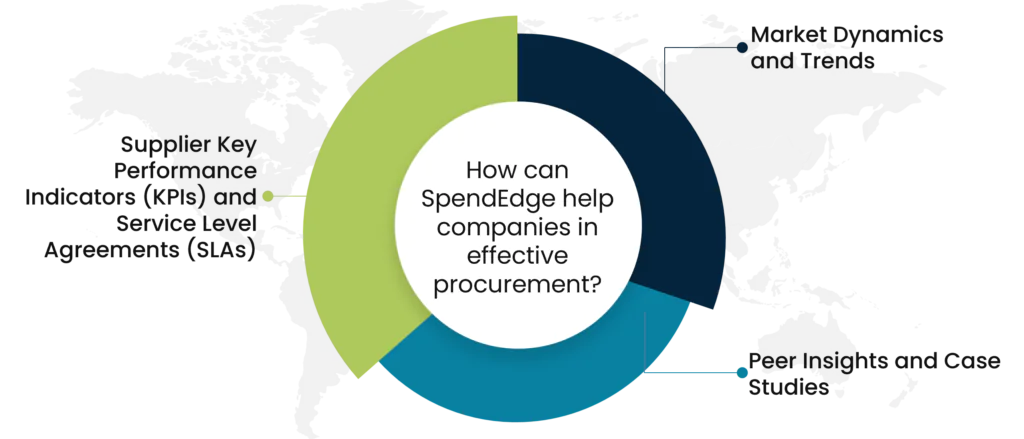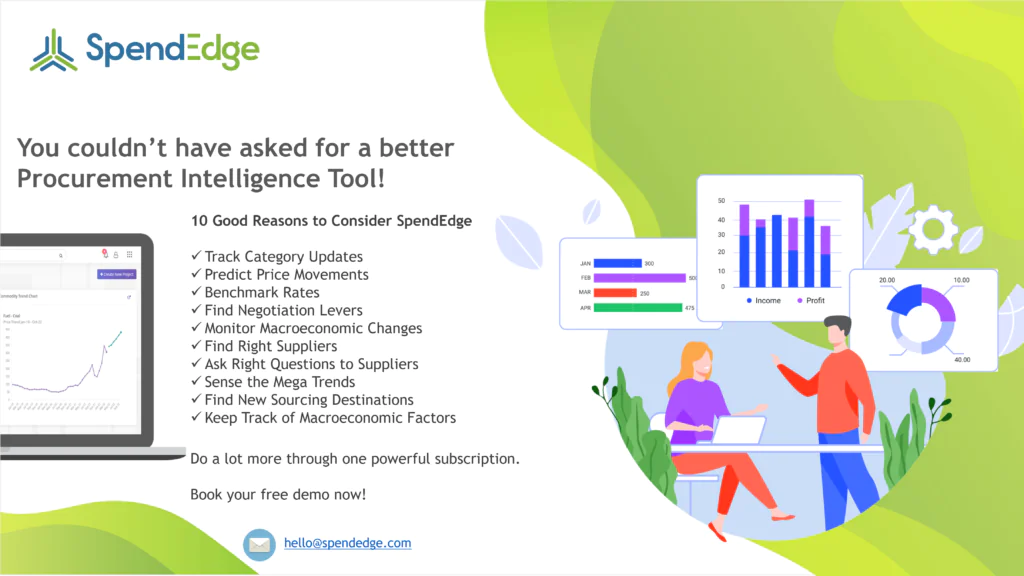By: George Mathew
Generative AI refers to a type of artificial intelligence that is designed to generate content, often in the form of text, images, or even audio, that is similar to content created by humans. It involves using algorithms and models to produce new data based on patterns and examples in existing data. Procurement, like many other areas of business, can greatly benefit from generative AI. Large language models (LLMs) have the ability to not just analyze information and answer questions, but also provide insights and create content. When integrated into the rapidly evolving digital procurement landscape, generative AI applications can transform a wide range of procurement capabilities. By assisting teams with routine tasks and acting as a co-pilot to category leaders, generative AI can provide strategic value-add through inspiration on demand.
ChatGPT, a type of generative AI, is an artificial intelligence program that is designed to generate dialogue. OpenAI created it and utilizes machine learning algorithms to process and analyze vast amounts of data to provide appropriate responses to user inquiries. This language processing software can comprehend human language in both spoken and written forms, enabling it to process the information it is given and generate suitable responses.
Benefits and limitations of ChatGPT
Benefits of generative AI in procurement
Hyper-personalized and efficient buying experience:
Procurement organizations have put in a lot of effort to enhance the purchasing experience and make it more convenient for business users to buy what they need in a responsible manner. Generative AI takes this to the next level by supporting category managers, simplifying decision-making, and helping procurement gather insights across the entire business. With generative AI, each purchase request can be transformed into a conversation, where internal and external data can guide business users to the right channels that are pre-vetted for compliance and policy.
Accelerated and simplified supplier management:
Managing suppliers can be a complex and time-consuming task. However, by leveraging generative AI, businesses can streamline their supplier management lifecycle, making it faster and simpler. A generative AI chatbot could act as a centralized communication hub for supplier onboarding and access provisioning, as well as answering any engagement-related questions. This would significantly reduce onboarding roadblocks, allowing suppliers to understand the company’s business needs better and deliver value faster. Additionally, generative AI can also aid in supplier performance management.
Smarter and enhanced category management:
Procurement can leverage generative AI to enhance stakeholder and supplier relationships while also becoming a cross-functional leader within the business. There are already many AI tools available to aid in defining category plans and sourcing strategies. Additionally, generative AI can offer real-time or near-real-time market intelligence and innovation trends for a category’s key areas. By helping teams customize their analysis for important stakeholders, generative AI can identify opportunities for category managers to optimize value. For instance, it can generate a report of expiring contracts for a specific business unit in response to a request.
Transformed risk management:
It is possible for generative AI to monitor risks in real-time and propose plans to mitigate them. For example, if the procurement team wants to buy a commodity from a preferred supplier in a specific region, generative AI can identify rising tensions in that region and suggest that they secure upcoming supplies from a different location where the company is already working with suitable alternative vendors. Additionally, LLMs can be utilized to assess contract language across multiple suppliers, identify key risks, and evaluate opportunities for efficiencies, renegotiation, and rationalization.
Limitations of using generative AI in procurement
Frauds: purchase order and supplier selection
Purchase order fraud and supplier selection fraud present significant challenges. Purchase order fraud involves the forgery and manipulation of orders, often by insiders, making detection difficult. In complex supply chains, tracking fraudulent orders is challenging. Supplier selection fraud involves dishonest practices in vendor selection, leading to suboptimal choices and financial losses. Both types of fraud demand robust accountability and auditing procedures to mitigate risks effectively.
The revelation of sensitive intellectual property:
It is important to handle data entered into generative AI tools with care, as it can be viewed by others using the service. Even if the spread of this information is unintentional, it is still concerning that confidential intellectual property and trade secrets could potentially be stolen by AI. As a result, Samsung and other companies have recently banned or temporarily suspended the use of generative AI technology by their employees while investigating potential risks.
Algorithmic bias in supplier recommendations:
Algorithmic bias in supplier recommendations is a significant challenge. It arises when automated systems suggest suppliers in a way that unfairly favors certain groups, often due to biased training data. This can lead to unequal opportunities, overlooked high-quality suppliers, and potentially unethical decisions. Detecting and mitigating such bias is complex, requiring constant monitoring, diverse training data, and fairness-aware algorithms. Addressing this issue is crucial for ensuring fair and equitable supplier selection processes, promoting diversity, and preventing discrimination in procurement practices.
Disruption in critical supplies caused by AI-induced panic buying:
Disruption in critical supplies due to AI-induced panic buying is a significant concern. AI-driven algorithms can amplify panic buying by responding rapidly to perceived shortages, depleting stockpiles, and causing real shortages. This poses risks to essential goods like medical supplies or food. Preventing AI-driven panic buying requires more robust AI algorithms that consider the broader context, regulatory measures, and crisis management strategies to stabilize supply chains and avert unnecessary shortages, ensuring the continued availability of critical resources during times of crisis.
How can SpendEdge help companies in effective procurement?

Market Dynamics and Trends:
We conduct an in-depth market analysis to understand the current landscape of procurement solutions. You can explore trends in the market, with a specific focus on innovations such as the adoption of generative AI in solution offerings. We provide information about recent developments, market players, and what suppliers are doing to stay competitive and meet evolving customer demands. Identify the emerging technologies and strategies that are shaping the procurement solutions sector.
Peer Insights and Case Studies:
With our intelligence, you can gain insights into how leading organizations are incorporating generative AI to enhance their procurement processes. Identify best practices that are driving efficiency, cost reduction, and improved decision-making. Explore case studies that showcase the implementation of generative AI solutions, highlighting the challenges faced and the strategies employed for successful integration.
Supplier Key Performance Indicators (KPIs) and Service Level Agreements (SLAs):
SpendEdge experts identify the key performance indicators (KPIs) crucial for evaluating the performance of software and technology solution vendors serving procurement teams. This includes measuring factors such as solution reliability, responsiveness to issues, data accuracy, and user satisfaction. We also help determine the essential service level agreements that should be incorporated into contracts with suppliers. These SLAs should cover aspects such as system uptime, response times for support, data security, scalability, and compliance with industry standards.
Success story: SpendEdge helped a European personal care manufacturer
Our client, a European personal care manufacturer, has been using enterprise-wide data to identify demand patterns for its products and consequently, the need for raw materials to make these products. However, this was largely a manual task where data engineers would analyze large volumes of data. Hence, there was a risk of errors and delays in decision-making related to order placement for raw materials. The client wanted SpendEdge to identify tools that could help them streamline the inventory management aspect of their procurement process so that orders for raw materials can be placed on time.
SpendEdge analysts scanned the market for different procurement tools that could help the client. The capabilities, features, support, etc. were mapped for each product and the best-fit solutions based on the client’s needs were identified. In addition, a best practices analysis was conducted wherein the processes being followed by global companies typically dealing with huge volumes of demand-supply, procurement, etc. data were checked. The technologies and tools being used by these companies were also analyzed.
Our best practices analysis helped the client understand the process changes required to improve the inventory management and order placement part of their procurement process.

Contact us now to solve your procurement problems!
Author’s Details
George Mathew
Associate Vice President, Sourcing and Procurement Intelligence
George is a procurement specialist at Infiniti Research and provides advisory services to clients across the pharmaceutical, CPG & FMCG, energy, and automotive sectors. He specializes in the procurement areas of industry benchmarking, cost modeling, rate card benchmarking, negotiation advisory, and supplier intelligence.




